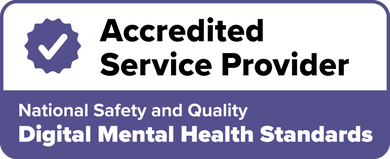Cognitive processing therapy explained
In a Nutshell
CPT is a research-backed therapy for PTSD that helps people identify and challenge trauma-related “stuck points” to reduce distress.
It focuses on reshaping beliefs about trauma rather than reprocessing memories or accepting thoughts as they are.
Delivered over 12-16 sessions, CPT can improve PTSD symptoms, depression, and overall wellbeing, but it isn’t recommended for people with certain severe and untreated mental health conditions.
Trauma can leave deep emotional marks that can hold you back from enjoying things that used to feel easy. For many, these challenges are part of post-traumatic stress disorder (PTSD), a condition that can make day-to-day living exhausting and unpredictable.
Cognitive Processing Therapy (CPT) offers a proven, research-backed approach to healing your trauma. In this article, we’ll explore what CPT is, how it differs from other therapies, and what the cognitive process looks like in practice.
Defining cognitive processing therapy (CPT)
Cognitive Processing Therapy is a specialised form of cognitive behavioural therapy that’s used specifically to treat post-traumatic stress disorder (PTSD). It’s designed for people whose symptoms developed after experiencing traumatic events, like child abuse, sexual assault, or natural disasters. It can also help people with complex PTSD, often caused by prolonged or repeated trauma.
During CPT, you work on identifying the unhelpful thoughts linked to your trauma, which are also called “stuck points.” You learn how to assess whether these thoughts are supported by facts and consider whether there might be a more accurate or balanced way to interpret your experiences.
The goal of this trauma treatment is to help you reduce distress by shifting the beliefs that keep your symptoms going. CPT is delivered in a set format, usually over 12 to 16 sessions.
CPT vs CBT
CPT falls under the specific types of cognitive behavioural therapy (CBT). Broader in focus, CBT is used for a wide range of mental health issues and focuses on changing unhelpful thoughts and behaviours.
Meanwhile, CPT is designed for PTSD and trauma, targeting “stuck points” through structured techniques like writing about the trauma and challenging related beliefs.
If your challenges are not linked to PTSD or trauma-related thinking, CBT may be a better starting point than CPT.
CPT vs EMDR
As another type of trauma-related therapy, eye movement desensitisation and reprocessing, or EMDR helps people reprocess traumatic memories using bilateral stimulation, such as guided eye movements, to reduce emotional distress. CPT doesn’t use these techniques and instead focuses on reshaping the thoughts and beliefs about the trauma through a structured, cognitive approach.
For those who prefer to work more directly on reprocessing the memory itself rather than analysing the thoughts about it, EMDR might be a better fit than CPT.
CPT vs narrative therapy
Narrative therapy approaches trauma recovery from a different angle. It treats the problem as something separate from the person and helps people reframe their life stories, often with a focus on future possibilities.
CPT, however, focuses on the beliefs that stem from the trauma and how those beliefs influence current feelings and behaviours. While narrative therapy always involves storytelling, CPT may or may not include a written trauma account.
CPT vs ACT
Acceptance and Commitment Therapy (ACT) is another evidence-based approach that can be used for trauma-related challenges. Instead of directly challenging or restructuring unhelpful thoughts like CPT does, ACT focuses on accepting those thoughts and feelings without letting them control your actions.
ACT may be a better fit if you prefer to work on building psychological flexibility and living meaningfully alongside difficult memories. CPT is more suited for those wanting to actively re-evaluate and shift trauma-related beliefs.
Uncovering your stuck points
In CPT, you’ll often hear about what’s called stuck points. These refer to the thoughts and beliefs that keep you stuck and prevent you from recovering from your trauma. While they can feel true, they’re rarely 100% accurate.
Stuck points can form after a traumatic event disrupts your sense of safety, control, or worth. These patterns often reflect the way a trauma brain processes information, leading to short, distorted, and overly generalised beliefs.
An example is “If I let others get close, then I will get hurt,” or “No one can ever be trusted.”
These patterns of thinking can quietly influence how you see and value yourself and how you react in everyday situations. They can also affect your decisions, often keeping you in a cycle of fear, guilt, shame, or avoidance.
CPT helps you learn to uncover your stuck points and test them against the facts. Over time, you develop more accurate and balanced ways of thinking. As these new perspectives take root, the old patterns lose their hold, and the symptoms of PTSD begin to ease.
Does it really work?
Research consistently shows that cognitive processing therapy can lead to meaningful reductions in PTSD symptoms across different groups, including military personnel and veterans. It has also been tailored for adolescents experiencing PTSD related to abuse.
According to the study State of the Science of Cognitive Processing Therapy, CPT has also been shown to produce positive outcomes for many of the common co-occurring conditions and symptoms that people with PTSD often face. It’s found to:
Help reduce depression that often accompanies PTSD
Lower suicidal thoughts and suicide risk factors
Treat individuals with both PTSD and substance use disorders
Improve sleep quality
But, there are situations where CPT isn’t exactly recommended by the experts. It’s generally not suitable for individuals with severe and untreated mental health conditions that make it unsafe to start PTSD treatment, such as active suicidal or homicidal intent, unmedicated psychosis, or unmanaged bipolar disorder.
In these cases, stabilising the person’s immediate safety and mental health comes before beginning trauma-focused therapy.
What to expect in a CPT session?
CPT follows a well-defined therapy structure, typically provided in 12 weekly sessions lasting around an hour each. Sessions can be held individually, in a group, or a combination of both, and they can take place either in person or online.
During your first session, your trauma and PTSD therapist will provide psychoeducation about PTSD. Then, they may ask about the kind of trauma you’ve experienced and how it has influenced your life. Worry not, as they’ll work at your pace, and you won’t need to share every detail right away. The purpose of this process is to give you and your therapist a clearer understanding of your PTSD symptoms.
As you progress, you and your therapist will work through any negative or unhelpful thoughts and practise cognitive restructuring. You’ll learn ways to examine these thoughts and consider different perspectives to reduce their ongoing impact on your life.
Before committing to CPT, it’s important to factor in practical considerations like therapy cost and scheduling, as well as finding a psychologist or therapist you feel comfortable and safe with.
Services like Talked offer free and unlimited introductory sessions, making it easier to find the right match and assess both fit and budget before starting your therapy.
Healing with professional therapy
Cognitive Processing Therapy helps people recover from trauma by identifying and challenging unhelpful stuck points. Through this process, it reshapes the beliefs that fuel PTSD symptoms, offering a clear path toward emotional relief and healthier ways of thinking.
While other approaches like CBT, EMDR, narrative therapy, or ACT may be better suited for different needs, CPT remains a gold-standard treatment for addressing trauma-related distress.
Begin your path to recovery by finding a therapist who genuinely understands and supports your needs. Talked simplifies this process by providing free, unlimited introductory sessions, allowing you to meet with different professionals until you find someone who feels like the right match for your recovery. With the right guidance and support, overcoming the effects of trauma can become both achievable and empowering.
Essential Reading
Recommended Therapists Available Now
VIC
Clinical Psychologist
I am a Clinical Psychologist with a Masters qualification and around six years of experience working predominantly in the Victorian public mental health system. My work h...More
QLD
Psychologist
As a psychologist, I value each client as an individual with unique life experiences, skills, and talents. I love helping my clients clarify what makes life rich, full, a...More
QLD
Clinical Psychologist
I provide a counselling approach that is compassionate, non-judgemental, and evidence-based. My goal is to create a safe and secure therapeutic space where you feel heard...More








